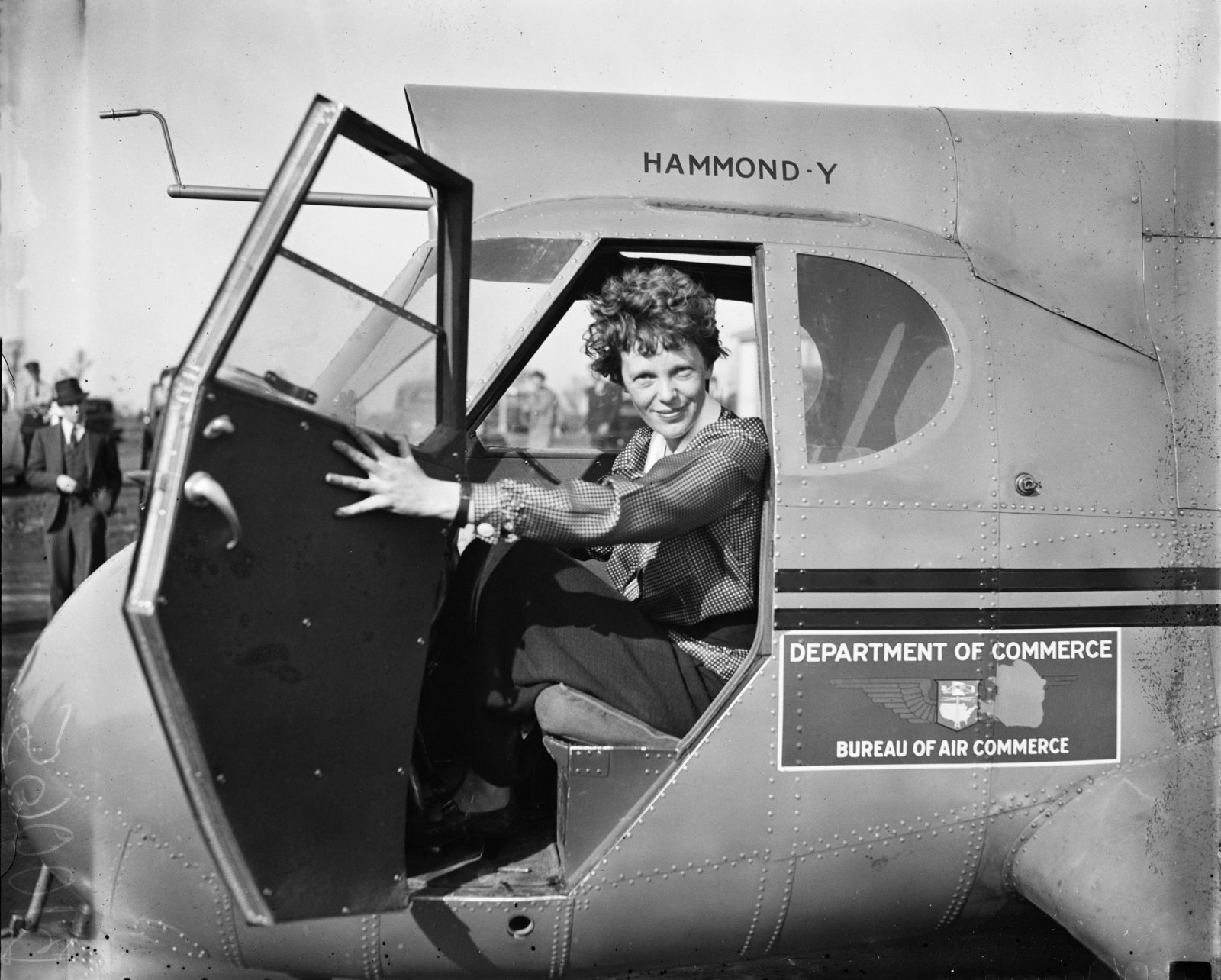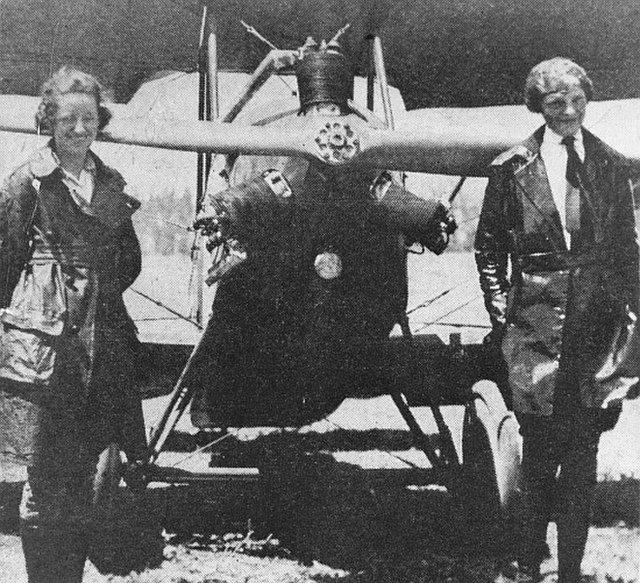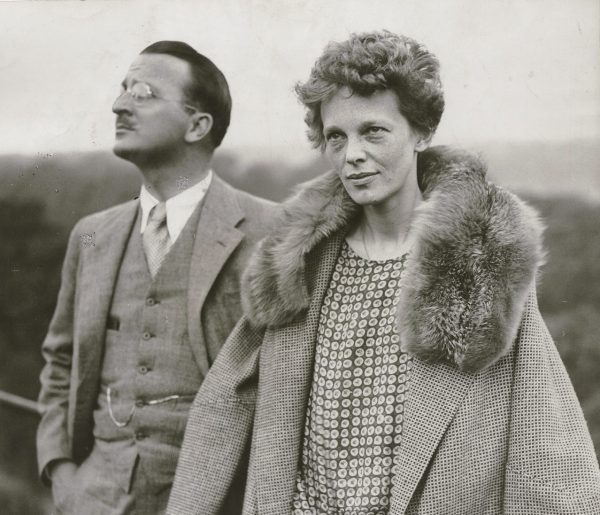Amelia Earhart: The Legend of The American Aviation

|
Getting your Trinity Audio player ready... |
A leader in aviation for the United States, Amelia Earhart was a true pioneer. She broke barriers as a female pilot and gained worldwide recognition for her efforts to build the morale of women seeking to pursue careers in aviation.
Amelia Earhart became a household name by making history as a female solo flyer. With her expeditions in the skies, she became the first American woman to pilot long-distance flights over the Atlantic Ocean while showing her ability to overcome many difficult situations. She led a mysterious life of challenges, hardships, and blatant surprises. One of the biggest mysteries, Earhart’s 1937 disappearance on a transcontinental flight, continues to generate theories and hypotheses.
Her achievements in aviation history serve as golden moments to nullify the myth that women can not succeed in challenging endeavors. “As with my other flights, the only reason I’m doing this one is that I want to and also because I believe that women sometimes need to demonstrate what they are capable of doing to be taken seriously.” Amelia Earhart sent those remarks to President Franklin D. Roosevelt in 1936, just a year before her fateful trip around the globe, which ended her life. Her statements reveal a deep yearning to encourage other females to select flying careers and demonstrate their skills and knowledge.
Childhood:
On July 24, 1897, Amy and Edwin Earhart welcomed a baby girl named Amelia to their family. When she turned 12, her parents decided to relocate to Atcheson, Kansas. Throughout their tumultuous marriage, her parents separated several times. Her father was a lawyer who worked near Rock Island, and during summers, Amelia would visit him. In 1909, her father moved to Des Moines, and while in Des Moines, Earhart saw an aircraft for the first time when visiting the state fair. Young Amelia was not awed by the sight of a plane; instead, she marveled at the creativity and mechanics that allowed airplanes to fly.
In 1914, Amy Earhart moved her girls, Amelia and Muriel, away from Edwin and relocated to Chicago. Amelia Earhart became a dedicated student at Hyde Park High School. She graduated in 1916.
While this was happening, her father, Edwin struggled with alcoholism. Amelia’s lifelong aversion to drinking and her insatiable need for financial stability can be traced back to the humiliation she experienced as a direct result of her father’s struggles.
Care for Humanity:
The following school year, using her mother’s estate inheritance, Amy Earhart enrolled Amelia at Philadelphia’s prestigious Ogontz School for Junior College and High School. During the holiday season, Amelia reunited with her family in Canada, where her sister Muriel attended a private school in Toronto. Amelia was a kind-hearted person, and when she first encountered an amputee who was an injured soldier of war (WWI), she refused to go back to Ogontz in Philadelphia. Instead, she volunteered as a nurse at the veterans’ hospital and stayed there until the armistice (truce) in 1918. She became a committed pacifist due to her ordeal. During her tenure at the military hospital in Canada, she came across many pilots, and her conversations with them sparked her interest in flying.
Following her graduation from the University of Toronto, Earhart relocated to Northampton. In 1919, to continue her education, she enrolled in Columbia University. However, shortly after, her parents reconciled in Los Angeles, and she moved back with them. Hence, in the summer of 1920, she left Columbia University.
The Beginning of Solo Flying Journey:
The winter of 1920 was special because Earhart attended her first air show. After realizing that flying was her calling, she started taking flying lessons with another female flyer named Neta Snook.

Earhart received her pilot license from the National Aeronautics Association on December 15, 1921. Earhart bought a pre-owned Kinner Airster aircraft on her 25th birthday and dubbed her “the Canary.” Earhart purchased the aircraft by saving money when she worked part-time (office assistant, assistant photographer, and truck driver) and relied on her mother for financial assistance. After that, however, she struggled to pursue her pricey pastime.
In 1924, Earhart’s parents divorced for the second time. After selling her aircraft, she acquired a vehicle, which she utilized for transporting her mother to Boston. Her sister Muriel, a schoolteacher, resided in Boston. In New York City, she rejoined Columbia University but could not prolong her studies for more than a year due to financial constraints. Finally, she decided to stay in Boston, where she chose a different profession as a social worker, became a member of the NAA, and kept flying airplanes in her leisure time.
Her Urge to Fly:
In 1928, Earhart nodded ‘yes’ when she was allowed to join a crew for a transatlantic trip. The idea for the trip came from editor George Palmer Putnam. Putnam published WE, the autobiography of famous American aviator Charles Lindbergh. The book featured Lindbergh as the first successful solo pilot to fly from New York City to Paris nonstop. Putnam promoted Amelia as “Lady Lindy” because she had previous flying experience, was well-educated, and presented herself as Lady Lindbergh.
She travelled across the Atlantic Ocean on June 18-19, 1928, flying from Newfoundland to Wales. The pilot, Wilmer Stultz, and mechanic, Louis Gordon, accompanied her. Earhart achieved worldwide fame for being “the first flying lady who remained in skies while crossing the Atlantic Ocean,” even though she never touched the aircraft’s control. After the flight, she called herself “nothing more than a bag of potatoes.”
In 1929, Earhart was one of the women who contributed to establishing the “Ninety-Nines” – an organization representing the lady pilots. Earhart became a media phenomenon and an example of what women could do. George Palmer Putnam, a publisher who had assisted in the planning of the trip itself, was responsible for most of the publicity. Later in life, Earhart wed Putnam, although she continued to use her maiden name and viewed her marriage as an equal partnership.
In 1932, Earhart made history by becoming the first female pilot to complete a solo transatlantic flight. She was granted the Distinguished Flying Cross for this accomplishment and was the first woman to receive this distinction. In the fall of the same year, Earhart made history by completing the first solo, the nonstop trip across the United States.
In 1935, Earhart made history again; she flew an aircraft solo from Hawaii to mainland America. In the same year, Earhart was employed by Purdue University to serve as an aviation adviser and career counselor for female students. In addition, Earhart made her debut in the fashion industry by launching a line of practical apparel that she said was created “for the lady who lives an active lifestyle.”
The Last Flight and Her Disappearance:
Earhart and Fred Noonan began their fateful transcontinental flight in 1937. On June 29, they arrived at Lae, New Guinea. They had less than 7,000 miles to go before they would have accomplished their mission and arrived in Oakland. On July 2, the two travelers began their journey from Lae. Sadly, this was the last time Earhart was seen alive. She and Noonan did not maintain radio contact, and the plane was reported missing.
A great effort was put into finding the duo over two weeks, but they were never located. By January 5, 1939, Amelia Earhart and Fred Noonan were officially declared dead. Their disappearance remains a mystery to this day. Remarkably, during her last flight, Earhart transmitted various documents to her husband, including letters and notes from her journal. Her husband edited and published those in a book titled Last Flight (1937).
Even though the government records released by the United States claim that Earhart and Noonan perished in a plane crash in the Pacific Ocean, the public’s fascination with Earhart’s disappearance has led to the development of a wide variety of alternative explanations. Some people believed the aircraft had crashed on an island that was not its intended destination. Others speculated that the Japanese, suspecting that Earhart was a spy, captured her as a prisoner. Despite these theories, there has never been any conclusive evidence of her fate. Over time, both Amelia Earhart’s life and death have evolved into a cultural phenomenon.
Interests other than Aviation:
Indeed, Earhart was the first female pilot who crossed the Atlantic, but after her first historic flight, she ran out of money. Earhart and her husband (who also functioned as her manager) looked to the fashion industry to finance her pioneering career.

In 1933, while residing in New York, she decided to launch the apparel business. When she first started, one seamstress helped Earhart get her clothesline off the ground. Starting with its premiere at New York’s R.H. Macy & Co., Amelia Earhart Fashions was carried by 30 other department shops nationwide.
The apparel collection had a total of 25 separates designed, ranging from dresses and skirts to trousers and outerwear. Every item of clothing had a tag that included Earhart’s signature in black ink, superimposed over a picture of a red airplane flying from left to right.
The apparel line was avant-garde, unconventional, and functional all at the same time. And even though households all across the nation were attempting to recover from the effects of the Great Depression, fashion and style on a nickel, however, were still just as vital as they had always been.
Although the clothes didn’t deviate too much from the styles of the 1930s, the unique designs were a perfect fit for Amelia Earhart’s taste. Unusual materials like silk from parachutes and fabric salvaged from aircraft wings were used in some scenarios by the designer, who also paid homage to her passion for flying by including buttons in the form of propellers on several of her garments.
Earhart experimented with fashion design even before the publication of her clothing line, which was regarded as a method to pay for her travels. For example, the aviator created a design for a two-piece flying suit just for the members of the Ninety-Nines (female pilots).
The suit was constructed with a significant focus on use, as seen by its spacious pockets, loose pants, and a zipper top that featured interlocking 9s on the breastplate. Although the suits were never formally approved for use by the Ninety-Nines, they were featured in a two-page spread advertisement in Vogue.
Amelia Earhart Fashions struggled during the Great Depression, despite the designer’s creative efforts and tireless labor. On the other hand, Earhart’s fashion career was not an absolute failure. In 1934, the Fashion Designers of America selected the well-known pilot as one of 10 ladies in the United States who exemplified the finest in fashion.
The Legacy of Earhart’s Professionalism:
Amelia Earhart’s biography is exceptional because of her accomplishments as a pilot and because she achieved so much during an era in which women were severely limited in the roles they could play in society. The 19th Amendment, granting voting rights to females, finally enacted in 1920, was only one year before Earhart decided to begin her flight training.
Compared to preceding decades, the 1920s saw a modest increase in workplace autonomy for women. On the other hand, it was still widely believed that women’s proper place was in the home, where they should take care of the children, husband, and housekeeping. Earhart was married, but she did not allow that to stop her from pursuing a career as a pilot, which was a perilous endeavor for a man or woman.
She was a trailblazer, but the advancement of women in the aviation profession moved at a snail’s pace; by 1930, there were still only 200 female pilots working in the field. The 1930s, the decade that Amelia Earhart flew in, significantly increased the number of female pilots. By 1935, the number of female pilots who obtained flying licenses was not more than 800.
Due to WWII, Women were given more options to find a job in the aviation industry during the years 1940-1945. Because of the war effort, a larger workforce was needed. A greater number of women were given the option to work for the military during the war. As well as becoming pilots, women worked in the aviation industry in various support roles, including engineers and flight supervisors.
Earhart, a fervent advocate for gender equality, supported the Equal Rights Amendment. Her organization, Ninety-Nines, which is still working in the United States, represents female pilots from more than 44 nations. She followed her own guidelines throughout her life and paved the road for many other women who followed in her footsteps. So today, it is crucial that we recognize and honor the unmatched achievements made by this famous pilot.
Despite the increasing number of opportunities available to women in the aviation business, women pilots are still considerably outnumbered by males in today’s workforce. Women represent 7% of all pilot positions in the workforce. Although the numbers are low, there is clear evidence of progress, and we have Amelia Earhart and other pioneering female aviators to thank for paving the way for today’s women to take part in the aviation industry.
Edited by Sharon Rosenberg












